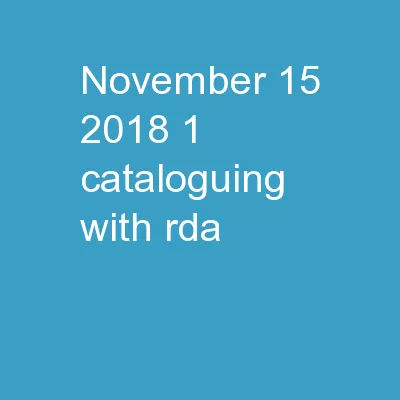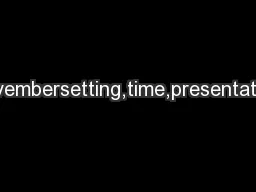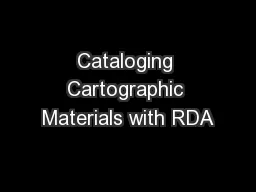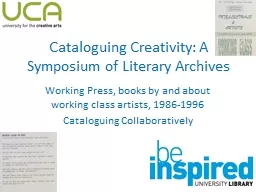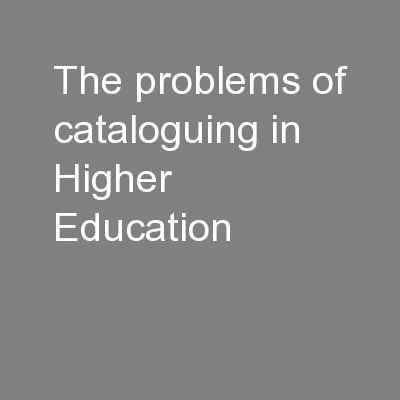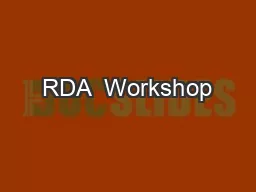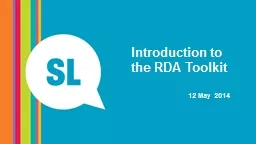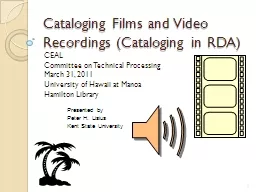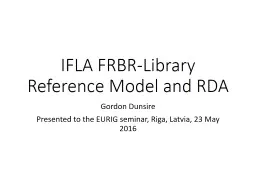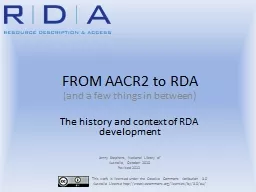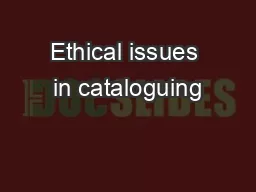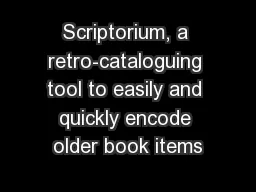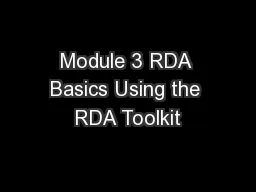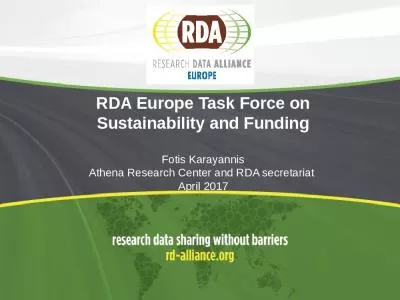PPT-November 15, 2018 1 Cataloguing with RDA
Author : olivia-moreira | Published Date : 2018-12-09
Gordon Dunsire Chair RSC Presented at First Colloquium on RDA in Latin America Mexico City Mexico 14 November 2018 November 15 2018 2 Overview Library Reference
Presentation Embed Code
Download Presentation
Download Presentation The PPT/PDF document "November 15, 2018 1 Cataloguing with RDA" is the property of its rightful owner. Permission is granted to download and print the materials on this website for personal, non-commercial use only, and to display it on your personal computer provided you do not modify the materials and that you retain all copyright notices contained in the materials. By downloading content from our website, you accept the terms of this agreement.
November 15, 2018 1 Cataloguing with RDA: Transcript
Download Rules Of Document
"November 15, 2018 1 Cataloguing with RDA"The content belongs to its owner. You may download and print it for personal use, without modification, and keep all copyright notices. By downloading, you agree to these terms.
Related Documents

